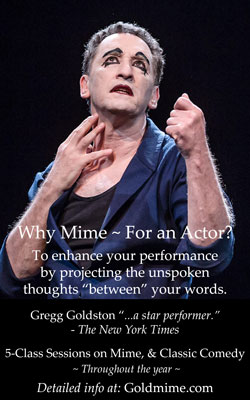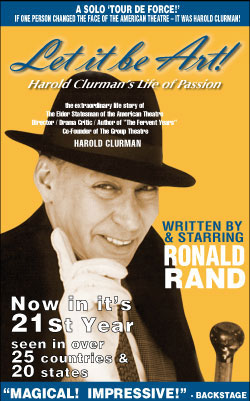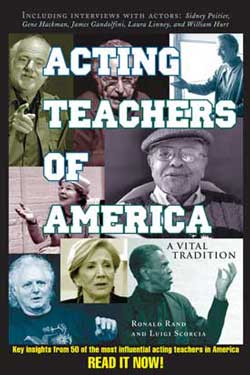Celebrating Uta Hagen Centennial at the HB Studio
“With every fiber of my being I want to act, and act until I die. I hope that I have learned to be a better artist, that I’ll keep on growing. With all that has been given me, I want to give it back, because the ultimate is not fulfillment of oneself but being of good service to one’s fellow man.” --Uta Hagen, Sources ©1983
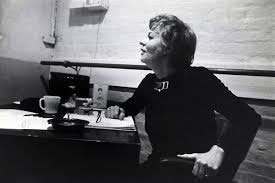 In 2019, HB Studio celebrated the Uta Hagen Centennial year with “Artist and Activist: Uta Hagen at 100,” presenting a special slate of programs highlighting Miss Hagen’s career and influences. For actors, there were a series of workshops on key plays, playwrights and advanced applications of Uta Hagen’s exercises, along with public talks, readings and special events. All the programs took place at HB Studio on Bank Street, as well as across New York City, and the country.
In 2019, HB Studio celebrated the Uta Hagen Centennial year with “Artist and Activist: Uta Hagen at 100,” presenting a special slate of programs highlighting Miss Hagen’s career and influences. For actors, there were a series of workshops on key plays, playwrights and advanced applications of Uta Hagen’s exercises, along with public talks, readings and special events. All the programs took place at HB Studio on Bank Street, as well as across New York City, and the country.
The Uta Hagen Centennial year celebrated the formidable master teacher, Uta Hagen, born June 12, 2019. Fourteen years after her passing, as we face deep rifts in our culture and a growing state of emergency in our natural world, we look back upon her legacy and find it relevant and timely.
Uta Hagen, known to her students as “Miss Hagen,” came to the United States from Germany with her family as a child. Her father Oskar was an art historian, her mother, Thyra, an opera singer. Growing up, she was surrounded by art and culture, encouraged to play, and taught to stand up for her own ideas.
Miss Hagen made her professional debut at the age of eighteen as Ophelia to Eva Le Gallienne’s” Hamlet.” By nineteen, she was playing Nina in “The Seagull” on Broadway with the Lunts. In 1943, she played Desdemona to Paul Robeson’s Othello with her first husband José Ferrer as Iago, directed by Margaret Webster, becoming the longest running production of Shakespeare ever staged on Broadway.
Uta Hagen as Desdemona opposite Paul Robeson in “Othello,” in the Theatre Guild production in New York in 1943–44. It became the longest running Shakespeare play in the history of Broadway
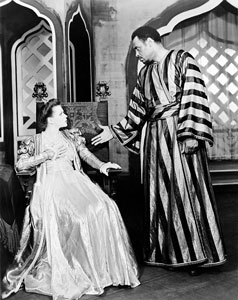 Uta Hagen as Desdemona opposite Paul Robeson in “Othello,” in the Theatre Guild production in New York in 1943–44. It became the longest running Shakespeare play in the history of Broadway
Uta Hagen as Desdemona opposite Paul Robeson in “Othello,” in the Theatre Guild production in New York in 1943–44. It became the longest running Shakespeare play in the history of Broadway
Miss Hagen played George Bernard Shaw’s St. Joan in 1951 on Broadway, as Blanche DuBois in Tennessee Williams’ “A Streetcar Named Desire” in its first National Tour, directed by Harold Clurman.
Ms. Hagen won Tony Awards for her performances as Georgie Elgin in Clifford Odets’ play “The Country Girl,” and as Martha in the original production of Edward Albee’s groundbreaking “Who’s Afraid of Virginia Woolf.”
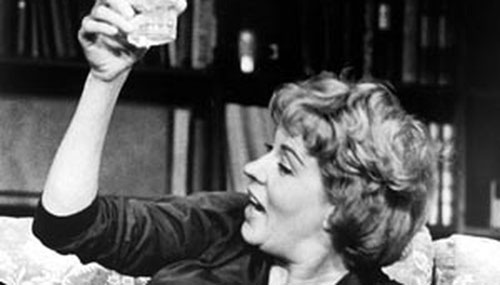
Uta Hagen as Martha starring in the original production of Edward Albee’s “Who’s Afraid of Virginia Woolf” on Broadway
As a teacher, she joined her soulmate and second husband, Herbert Berghof at HB Studio to train some of the greatest actors of the American stage and screen. Her classic books on acting, Respect for Acting and A Challenge for the Actor, are now translated into six languages, and used in theater training programs across the country and around the world.
&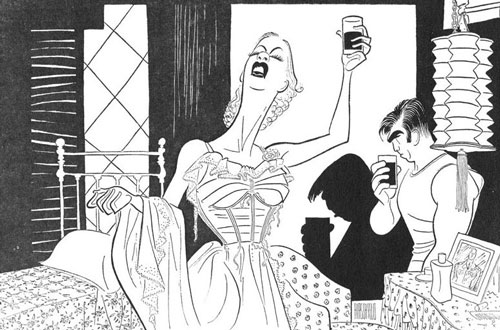
Uta Hagen as Blanche opposite Anthony Quinn in Tennessee Williams’ “A Streetcar Named Desire” in its first National Tour, directed by Harold Clurman.
Miss Hagen was inducted into the American Theatre Hall of Fame in 1981, received a third Tony for Lifetime Achievement in 1999, and a 2002 National Medal of Arts.
Uta Hagen’s acting classes were legendary. Thirty-five or more intensely motivated actors crowded into a studio amply equipped with props and household furniture. There was a coffee wagon and each week a different member of the class would prepare food, each vying to impress Miss Hagen, who was as wonderful a cook as she was an actress. Miss Hagen worked briskly through a long list of scenes and exercises each session with incisive, targeted comments, fostering a collegial atmosphere of jittery nerves and urgent focus.
Uta Hagen with Herbert Berghof at HB Studio in New York City
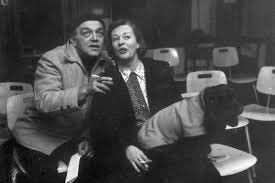 In that space where we tested our very best efforts and then assessed what we had done with Miss Hagen’s probing questions to guide us, we felt summoned to live our deepest truths out loud and strove to become our best selves. Flushed and warmed from the effort, each actor would be vividly revealed in their best moments on the floor in Uta’s class.
In that space where we tested our very best efforts and then assessed what we had done with Miss Hagen’s probing questions to guide us, we felt summoned to live our deepest truths out loud and strove to become our best selves. Flushed and warmed from the effort, each actor would be vividly revealed in their best moments on the floor in Uta’s class.
Uta Hagen’s approach to acting was entirely practical; in its essence, it was about living with attention and intent. Her teaching is timeless because it is endlessly flexible, and at HB Studio as we celebrate Miss Hagen’s 100th year and go forward – we are still bringing actors back to Miss Hagen’s well – to inspire and ground their work as artists.
Uta Hagen with Herbert Berghof
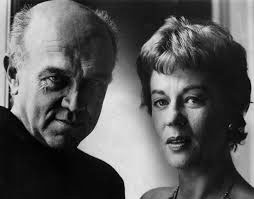
Miss Hagen’s work offers no “style,” but rather a scrupulous search for the content of the scene in human terms. As each artist discovers their individual relationship to the details, the form of the work will emerge from that quest. Our response to the character’s situation will not be what we wish it to be, but what it is. If we work with courage and integrity, we will not shrink from the unexpected.
Miss Hagen would have been the last to call her teaching a “technique” – she did not like for us to fetishize her ideas in that way. Her approach was that of an artist among artists seeking to make her world visible – with curiosity, specificity, and always, an ethical point of view.
She was steeped in music, art, and poetry and fervent in her wish that acting be respected as an art. She also lived large with lusty appetite; she loved good food, gardening, crossword puzzles, bawdy jokes, and tennis. She taught us to love the shape, color, texture of details; to savor sounds and tastes and smells.
Uta Hagen did not teach you how to act, she gave you the tools to locate yourself in a place at a time in relationship to people, places and things, with concerns that are urgent and specific and real enough to propel you into action.
Her process was about searching and asking – who, what, where, how, why, when – and of bringing that awareness into the active body. There was not a right way to act per se; there was the urge to create and a search for reasons and causes that would compel you to act, and to act not as a stage actor might but as a human being does, and always as if for the first time.
Miss Hagen’s aim, through the series of exercises she developed to practice on her own, was to first bring you into full physical, sensory and emotional contact with the details of your own world, and then using your own awakened senses, memory, and imagination, to make a leap just as actual into the world of the character.
When we begin to master this practice, when we come to the action, there will be nothing casually “naturalistic” about the acting choices we make. Rather we will act in the fullest, most present, most invested sense of the word.
We will discover in our work the truth about our human capacity for acts of kindness, acts of courage, acts of mercy, acts of betrayal. We will reveal acts of longing and desire, acts of vanity, acts of carelessness and self-interest, acts of cruelty, acts of war, and acts of love.
Miss Hagen taught us to use the known map of our own landscape to test and develop our sense of truth, and then to constantly draw a larger map, to deepen our understanding of the world around us. We must know and embody the physical world, the world of influences and relationships, of obstacles, gain and loss; the complex circumstances of desire and need.
We were taught to be rigorous, not sentimental, about the intentions that guide us, and to make no false representation of who we are and what we want and what we are doing to get what we want.
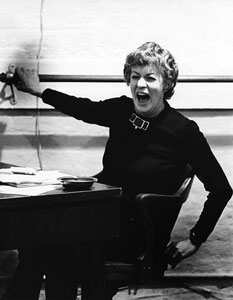
Uta Hagen at HB Studio in New York City
Perhaps we discover that false representation is the point and purpose of a character’s actions, and then we find a way to make that true as well. Even as we were taught to seek the truth, we learned to recognize the action in a lie, the lie’s design and its true purpose.
There was a point in the journey where we began to understand that this way of acting, this way of understanding and pursuing art was also a way to move through our times. It was meant to turn us toward a responsible, engaged, and conscientious pursuit of both meaning and action in the world.
And as we matured as artists we would come to understand that when we veer off that path, we are abandoning our humanity, which is, finally, the real point of this work – not to become fabulous or renowned or famous, but to give succor to other human beings through our understanding, articulation and expression, through performance, of their struggles, desires, and needs.
So the conversations in class and at the rehearsal table become conversations about life – about things like the way one fails to really hear the other, or how a young person dramatizes their first brush with death, or the strange things we do to restore order when we feel we are in chaos, or the roles we love to play with the people with whom we are most intimate.
As a leader and administrator, I find I make my best decisions when I think like the actor Miss Hagen taught me to be. And my most satisfying moments are those I spend in the back of a crowded classroom, stopping in on dynamic conversations about life and art. • 2019
(Written exclusively for “The Soul of the American Actor” Newspaper.)
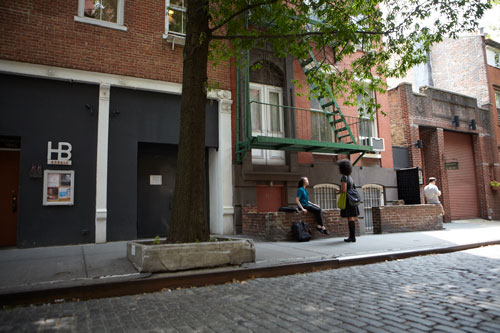
HB Studio in New York City
EDITH MEEKS has served as Executive and Artistic Director to HB Studio since 2005, leading the Studio through a period of institutional transition from the death of master teacher Uta Hagen to the present. Ms. Meeks was a student of Nikos Psacharapoulos, Lynne Meadow, and Austin Pendleton. She trained as an actor with Herbert Berghof and Uta Hagen at HB and performed under Berghof’s direction in a series of productions at the HB Playwrights Foundation. In 1987 Berghof invited her to join HB’s Acting faculty. In addition to her 14 years teaching for HB Studio, Edith has taught acting for Swarthmore College, and in the film programs of The New School and Hunter College. Her professional acting work includes “A Question Of Mercy” (Philadelphia Theatre Co.), “Dancing at Lughnasa” (Actors Theatre Of Louisville), Rosalind in “As You Like It,” “Abundance” – Best Of Philly Award, “Tartuffe,” “The Stone House,” and Nora in “A Doll’s House” (People’s Light & Theatre Company) where she was a company member for ten years. Ms. Meeks film appearances include Todd Haynes’ “Poison and Safe,” Michael Gitlin’s “Berenice,” and Dan Sallitt’s “Honeymoon” and “All the Ships at Sea.” Before her current role at HB, Edith was Senior Officer, Information and Research, for the New York Foundation for the Arts, where she took part in the development of NYFA Source, a national information resource for performing artists; participated in the development of an MFA business-of-art curriculum for visual artists; and developed a column on career longevity for performing artists in NYFA Quarterly magazine. hbstudio.org/
"The knowledge that every day there is something more to learn, something higher to reach for, something new to make for others, makes each day infinitely precious" - Uta Hagen







































